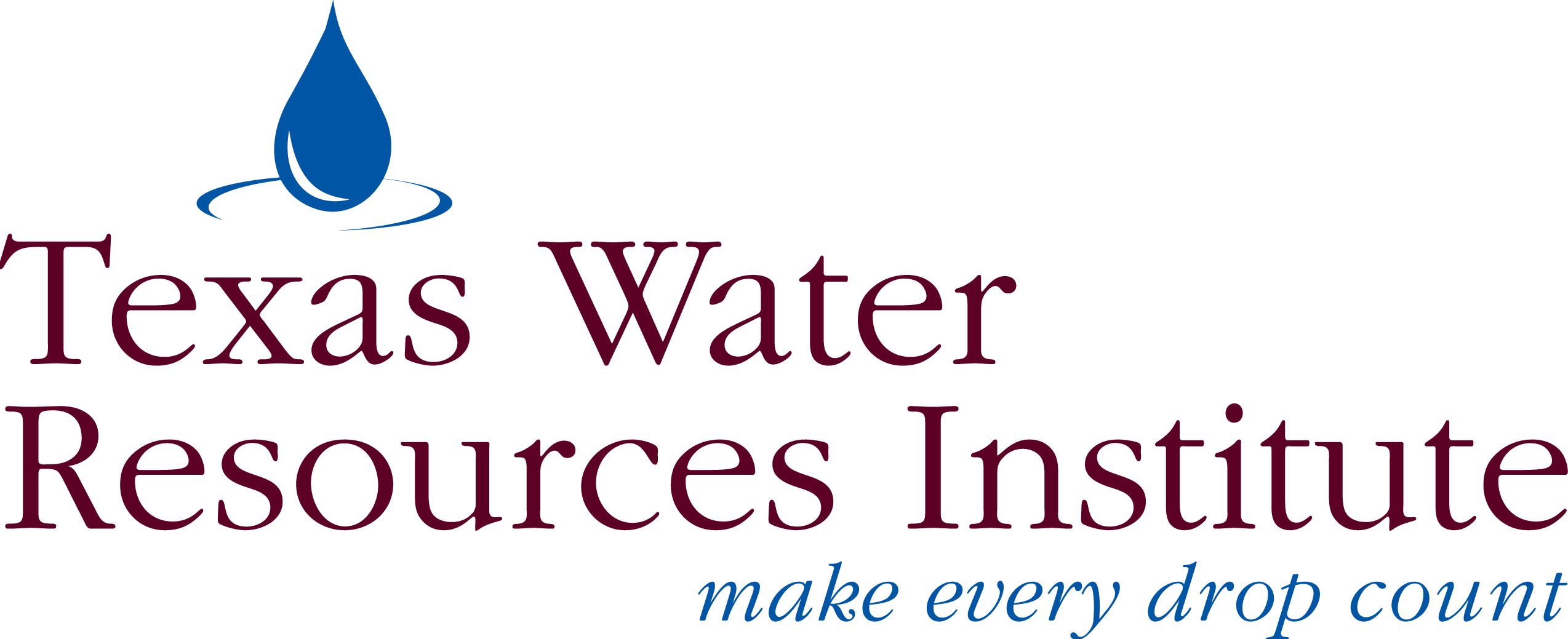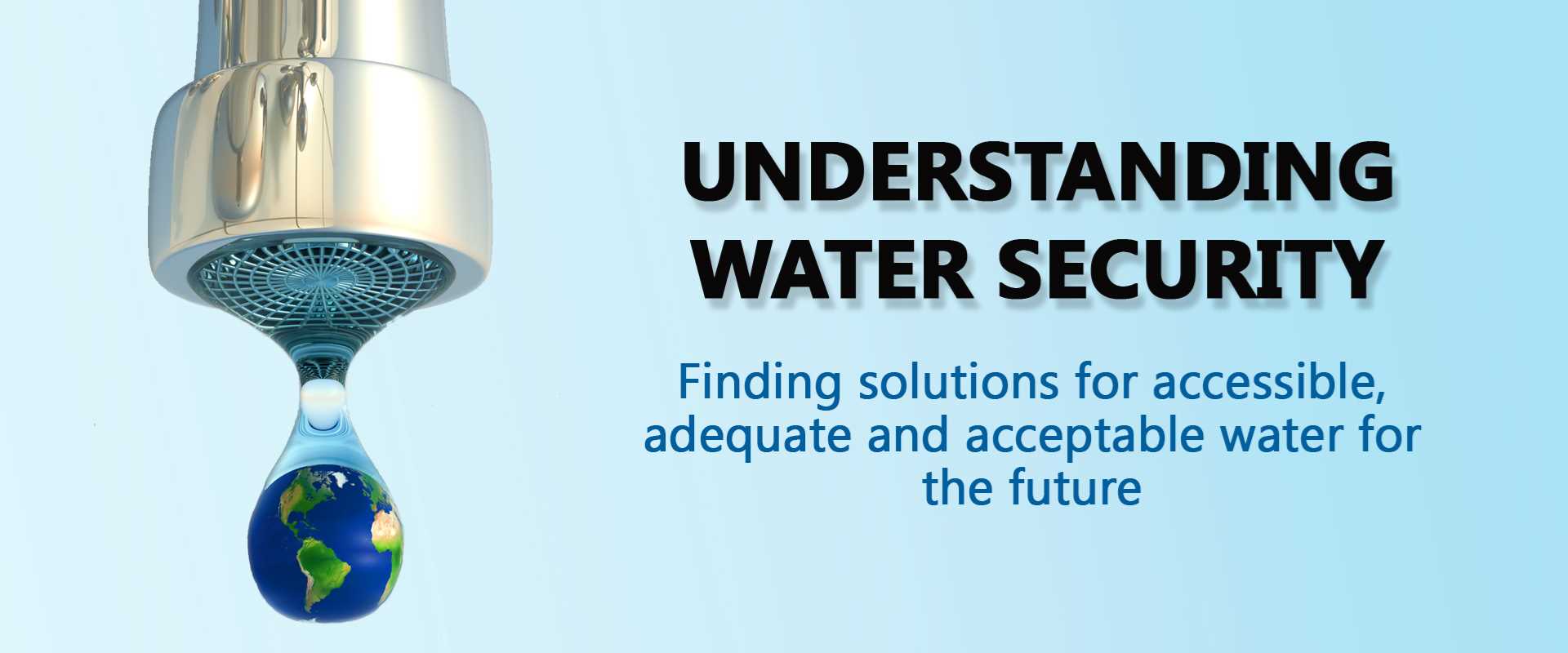The term “water security” means different things to different people.
For some, water security means simply having enough clean water to drink when they turn on the faucet; for others, water security involves having existing infrastructure to deliver the water, and still for others, it means guarding a nation’s water resources against bioterrorism.
Hurricane Harvey and the resulting flooding exposed some of these different meanings and levels of water security. It also illustrated the importance of water security to the well-being of communities, states and the nation.
More information
- Institute for Sustainable communities, Water security
- Texas A&M Water Security Initiative
- What is water security?, UN Water poster
The term “water security” means different things to different people.
For some, water security means simply having enough clean water to drink when they turn on the faucet; for others, water security involves having existing infrastructure to deliver the water, and still for others, it means guarding a nation’s water resources against bioterrorism.
Hurricane Harvey and the resulting flooding exposed some of these different meanings and levels of water security. It also illustrated the importance of water security to the well-being of communities, states and the nation.
“That level links with sanitation issues and that links with clean water access and the complex, social and political reasons that either contribute to water security or contribute to water insecurity,” said Jepson, who has been studying household water security along the Texas–Mexico border as well as in South and Central America.
Dr. Mary Hilderbrand, senior lecturer in The Bush School of Government and Public Service at Texas A&M, said in developing countries, access to water is a huge issue, not just in rural areas but in urban communities as well.

She said some cities in developing countries are experiencing rapid growth because of rural to urban migration. The countries’ urban populations are increasing, and these cities are trying to find ways to meet their water needs.
Examining water security from an institutional scale involves understanding the laws and institutional actors and organizations that are in charge of water allocation, management and protection — and whether they ultimately support or undermine water security.
“We know some geographic areas are experiencing water shortages, which means some people are going to get their water and some people aren’t,” said Dr. Kent Portney, director of the Institute for Science, Technology and Public Policy at the Bush School. “Every day that water becomes scarcer, somebody is going to be increasingly deprived. That then turns the attention to issues of who is deciding who gets what water. And that is water governance.”
“The link between water and security is undeniable. Where freshwater is plentiful, accessible and well-managed, economies can grow, communities can thrive and nature can flourish.”
Portney and Hilderbrand, along with Gabriel Eckstein, professor in the Texas A&M School of Law, and Dr. Rosario Sanchez, research scientist with the Texas Water Resources Institute, are working on understanding the governance of shared water across the United States-Mexico border.
Another perspective of water security, Jepson said, includes studying how water security is challenged by global environmental changes, such as climate change, and how existing water systems will need to adapt to these changes.
“For example, coastal areas have the largest concentrations of human settlements, but yet they are facing increased sea water temperatures, sea-level rise and salt water intrusion that threaten coastal aquifers,” she said.
Is water insecurity an issue in the United States?
While some might believe that having sufficient and clean water is limited to developing countries, that is simply not the case, according to the researchers.
“Living in College Station or the Dallas-Fort Worth area, we are confident that when we turn on the tap, water will come out and be clean,” Eckstein said, “but there are a couple of million people in the United States who don’t have that security. They live along the Mexican border, in the Appalachians and the Ozarks, as well as other areas of the country.”
Jepson agreed that these challenges are not restricted to the poorest nations.
“Although access to piped and improved water sources has increased over the past decades, domestic water security remains a difficult goal to achieve in economically distressed communities in both developed countries and across the developing world,” she said.
“It is quite clear that while the majority of Americans do have water security, it is not as secure as we maybe thought in the past,” Jepson said, citing the example of lead-contaminated drinking water in Flint, Michigan, caused by inadequate water treatment and aging infrastructure. Other U.S. cities, including Detroit, Chicago and Washington, D.C., are facing some of the same issues, she said.
“There is this idea or myth of universal provision of water in the United States…and when something like Flint happens we are surprised about it,” she said. “I was not surprised about it.”
In Texas, Corpus Christi had four water contamination-related alerts in 2015 and 2016, according to news reports. Many other Texas cities have also issued boil water notices because of breaks in their water infrastructure or problems with water treatment.
“I don’t want to overplay the notion of water insecurity, but I think it is a lot more significant than we have been talking about in the past in the United States,” Jepson said. “We just have not been asking the right questions. We are assuming that everything is taken care of, and we haven’t thought critically about what questions to ask.”
Some of the most water insecure and vulnerable areas in the country are along the Texas-Mexico border. Jepson said certain populations, particularly low-income Mexican-American communities, have been historically and politically marginalized from water systems in the Rio Grande Valley.
Although economic factors such as poverty and urban development affect this lack of water security, she said the complex and highly fragmented water governance in Texas also contributes to it.
“The districts that organize the allocation and monitoring of water provision are highly fragmented,” Jepson said.
The Inuits in Alaska are another example of U.S. populations struggling with water insecurity. Not only are they poor and live in rural areas, but their water resources are changing because of climate change, she said.
Looking ahead
Even geographical areas not normally considered insecure can become susceptible.
The droughts that California experienced in 2016 and Texas in 2011 illustrate how vulnerable some areas are to becoming water insecure, Eckstein said.
With Texas’ population expected to double by 2070 but its water supplies predicted to decrease, he said, the state could find itself experiencing water insecurity.
For Eckstein, he sees Texas A&M’s emerging focus and research on water security as beneficial.
Although water quantity and water quality research have traditionally been divided into sectors, such as agriculture use, industrial use and municipal use, tackling water research in terms of water security allows scientists and others to look at water from another perspective, he said.
“The security approach gives us a different view of how to look at water as a resource,” Eckstein said. “I don’t know if it will get us to any different outcomes or conclusions, but we have to go down this road to see because the approaches we currently take don’t always give us definitive answers and quite often don’t give us helpful answers.”
The capacity of a population to safeguard sustainable access to adequate quantities of acceptable quality water for sustaining livelihoods, human well-being and socio-economic development; for ensuring protection against water-borne pollution and water-related disasters; and for preserving ecosystems in a climate of peace and political stability.
Working definition of water security, United Nations-Water, 2013



